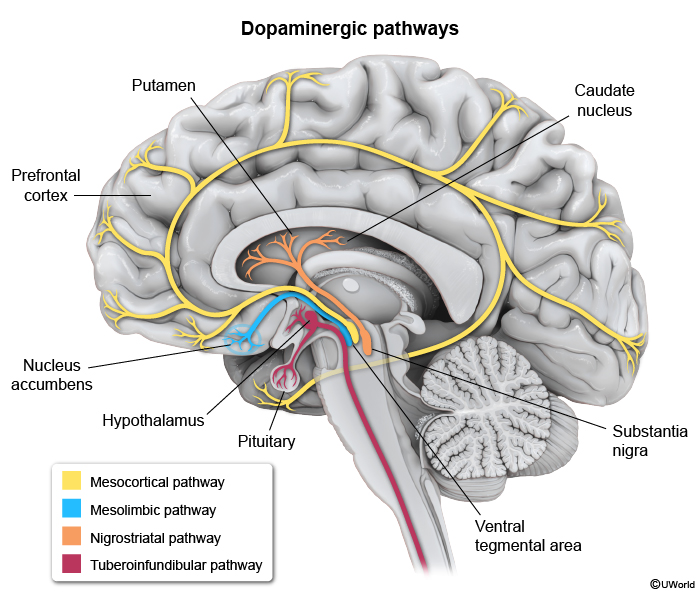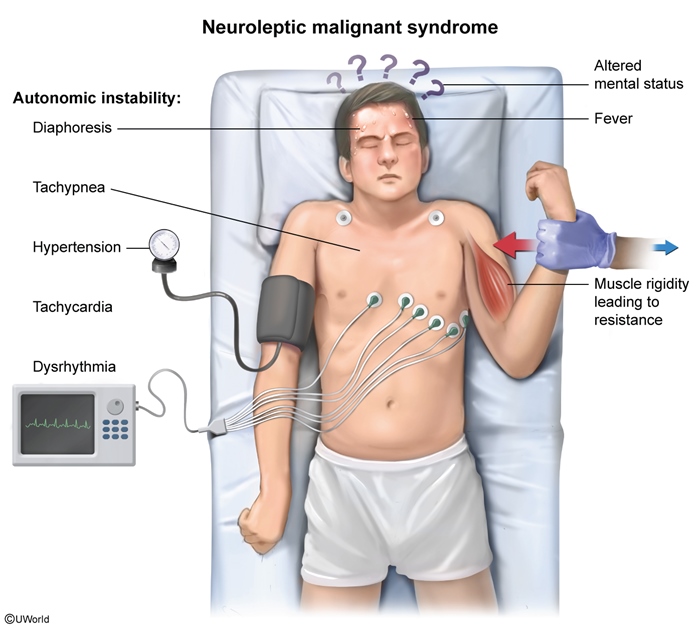Antipsychotics
Article Sections
Introduction
Antipsychotic medications treat acute and chronic psychotic disorders as well as mood disorders and agitation. There are 2 classes of antipsychotics: first-generation antipsychotics (FGAs) (typical antipsychotics) and second-generation antipsychotics (SGAs) (atypical antipsychotics). Most FGAs and SGAs block postsynaptic dopamine D2 receptors in the brain and have comparable efficacy, though their varying degrees of affinity for additional receptors (eg, serotonergic, muscarinic, alpha-adrenergic, histaminic) result in different adverse effects and safety profiles.
First-generation (typical) antipsychotics
FGAs treat schizophrenia spectrum disorders (eg, brief psychotic disorder, schizophrenia, delusional disorder) by reducing positive symptoms, including hallucinations, delusions, and disorganized thoughts (eg, tangential speech) and behavior. However, due to increased risk for extrapyramidal symptoms (EPS) and tardive dyskinesia with FGAs, SGAs tend to be preferred.
Continue Learning with UWorld
Get the full Antipsychotics article plus rich visuals, real-world cases, and in-depth insights from medical experts, all available through the UWorld Medical Library.
Figures

